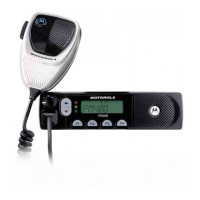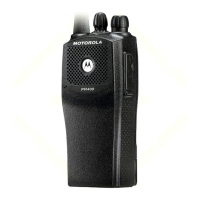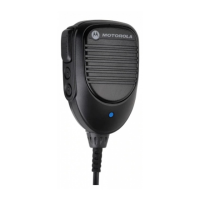Detailed Features/Benefits Description 2-15
If the store manager receives a customer query relating to the availability of a hardware product, he
can simply click to position 4 on the channel selector knob and talk to the Hardware department,
without disturbing the staff in other departments.
PL is often a licensing requirement for community repeaters where several different companies
share a common repeater infrastructure. PL prevents communications from one company being
heard by the others (and vice versa).
The Motorola Private Lineª signalling system actually consists of two different signalling schemes:
■
■
TPL - Tone Private Line - sub-audio tones continually transmitted with the audio signal (also
called CTCSS - Continuous Tone Controlled Signalling System)
■
■
DPL - Digital Private Line - sub-audio digital code continually transmitted with the audio
signal
Another beneÞt of using PL is that it eliminates the annoying "squelch tail" typically associated with
two-way radio communications. The elimination of the squelch tail improves the quality of
communication and means that conversations are easier to follow and understand.
The squelch tail is a short burst of channel noise heard by the receiving radio when the PTT is
released on the transmitting radio. This is caused because the receiving radio does not immediately
recognise that the transmission is over and squelch is momentarily held open, even though carrier is
not present.
PL prevents this by generating a reverse burst (for TPL) or a "turn off code" (for DPL) at the
transmitting radio when the PTT is released. The receiving radio instantly recognises the reverse
burst (or turn off code) and squelches the speaker audio.
The reverse burst (or turn off code) can be enabled or disabled using the CPS.
The P Series CPS allows you to program different transmit and receive PL codes on a per-channel
basis. TPL codes within the frequency range 67.0Hz to 254.1Hz (inclusive) are supported, as well as
the standard EIA/TIA-603 codes (including 2 non-standard codes).
3.4.2 Variable Squelch Settings
The Squelch setting, programmed into the radio on a per-channel basis, sets the criteria for
unmuting the radio speaker.
The Squelch setting ensures that the radio user only hears the necessary conversations - unwanted
channel noise is effectively Þltered out.
The P Series radios support two different types of Squelch :
■
■
Carrier Squelch : the radio speaker unmutes whenever carrier is detected on the channel
■
■
PL Squelch : the radio speaker unmutes when the appropriate receive PL code is detected on
the channel
